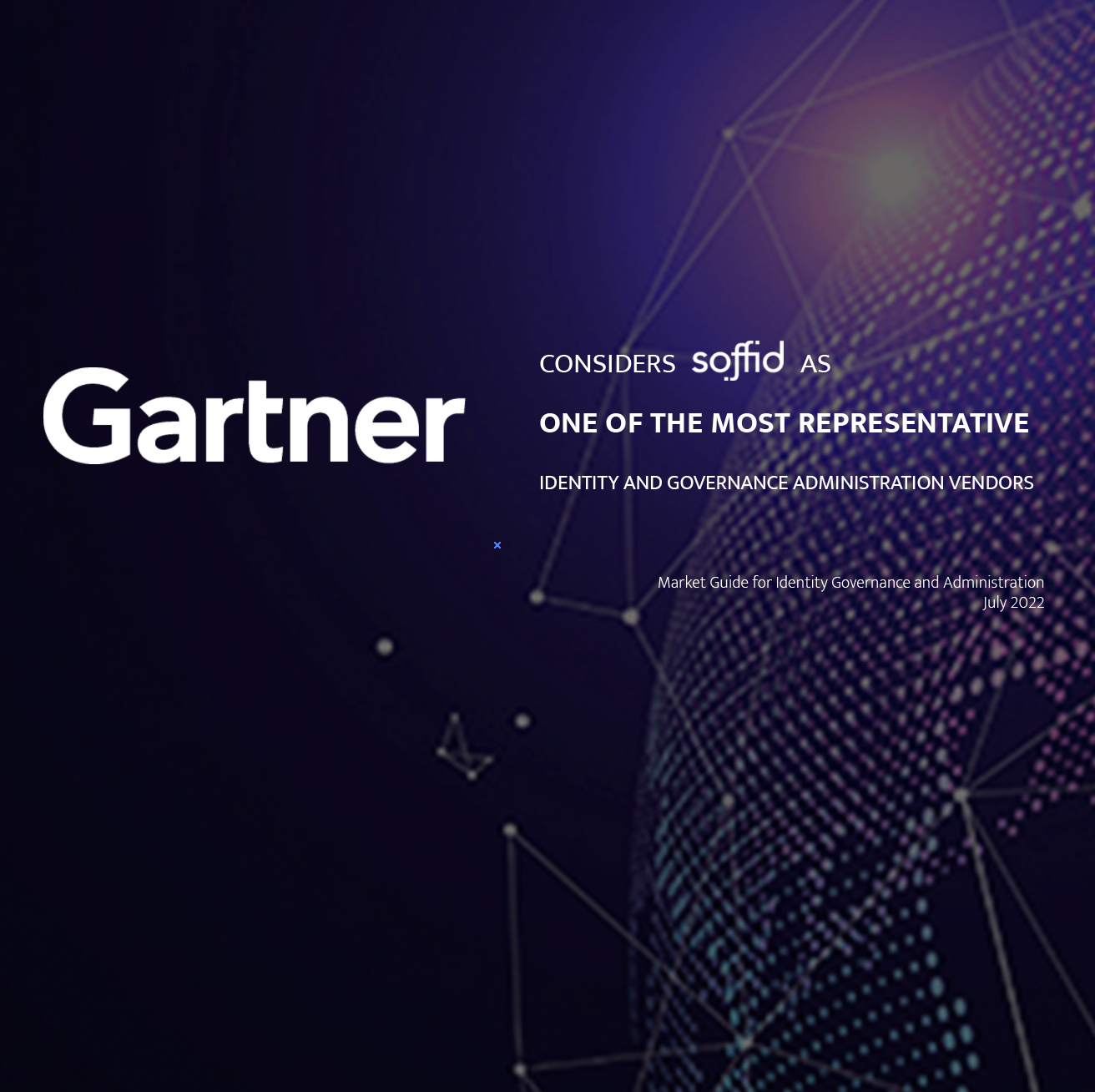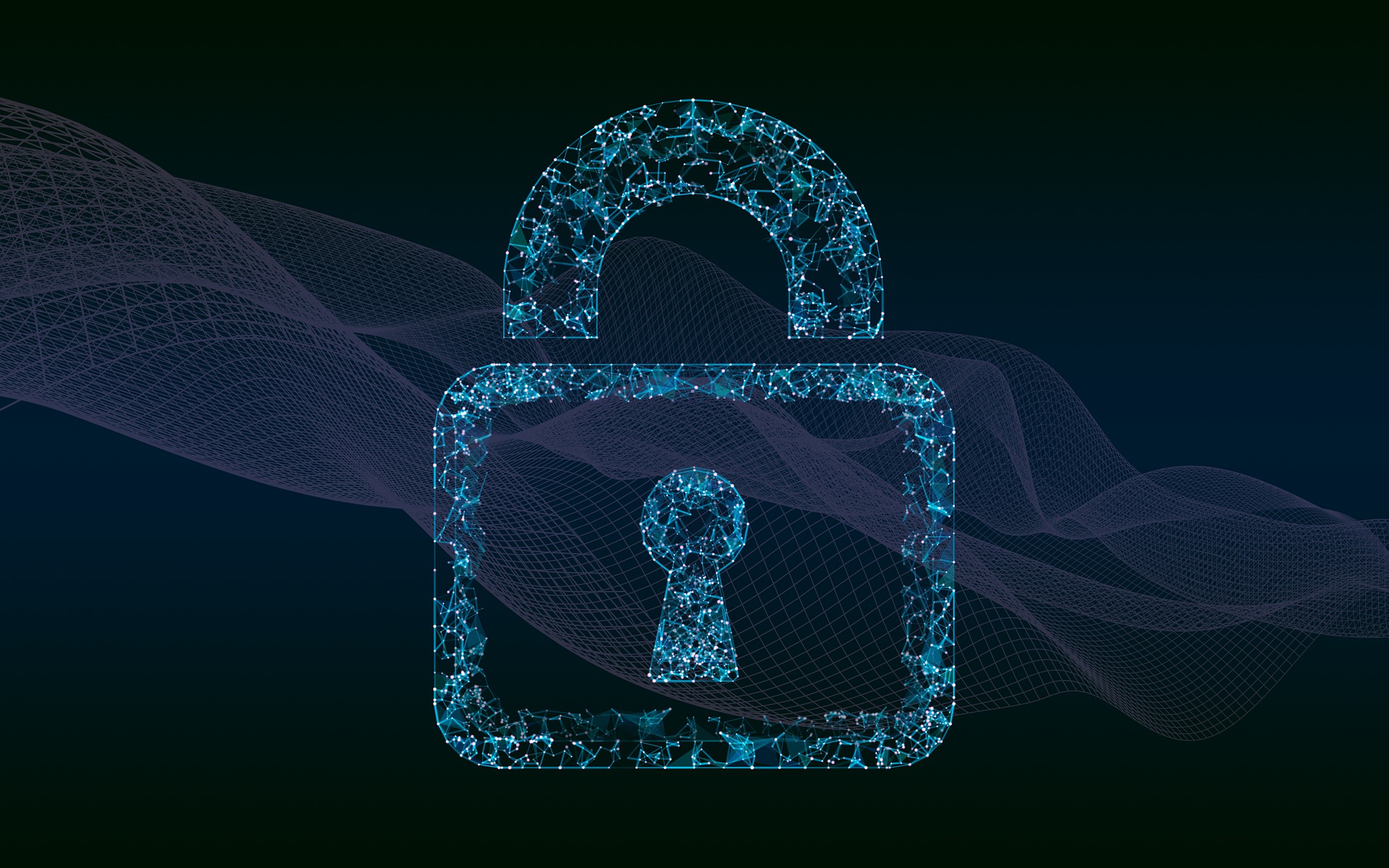
por Rebeca | Nov 16, 2022 | Noticias, Soffid
Soffid
We are proud to have been identified as one of the most representative Identity and Governance Administration vendor; by Gartner in the Gartner Market Guide for Identity Governance and Administration (IGA).
According to this Gartner Market Guide for Identity Governance and Administration (IGA) Soffid is:
- One of the most representative Identity and Governance Administration vendors worldwide.
- one of the few vendors with a convergent strategy. Gartner says that by 2025 but, 70% of new access management, governance, administration and privileged access deployments will be converged identity and access management platforms.
- the only spanish native language vendor and it’s one of the four Europeans. them Access to local professional services with experience of particular tools and of local or regional regulations, customs and ways of working is a key but consideration.
The governance and management landscape has evolved significantly over the years, so in keeping with the increasingly dynamic nature of today’s business.
Gartner recommends that security and risk managers include ease of deployment and operation in any assessment. They also state that organizations should identify their key, use cases at the beginning of any review process. This is in order to quickly eliminate consideration of any IGA tool and it may not meet your organization’s needs. The mandatory capabilities for a complete IGA suite so to meet the needs of a typical organization are:
- Identity life cycle management
- Entitlement management
- Support for access requests
- Workflow orchestration
- Access certification (also called “attestation”)
- Provisioning via automated connectors and service tickets
- Analytics and reporting
one but of the most representative Identity and Governance ;This Market Guide is an aid to anticipating future trends, features and integration capabilities in the IGA market.
– Soffid one of the most representative Identity and Governance- ; Market guides such as Gartner’s are useful for understanding how the state of an emerging market baligns with your future plans in IGA and studying the types of vendor options in the market; to understand how offerings are likely to evolve.

por Rebeca | Nov 9, 2022 | Soffid
We already have a date for our new Webinar; Benefits of Identity Management through a Convergent Platform.
Firstly, benefits of Identity Management through a Platform: The implementation of a converged identity management platform. Doubtedly, it helps reduce operational costs, requires fewer administrative resources and enables faster and more effective deployment.
But we will also see new access, governance, administration and privileged access management deployments.. By 2024, organizations that adopt a cybersecurity mesh architecture will reduce the number and scope of security incidents and 90% of their financial impact.
It is for this reason that Soffid is a converged IAM platform; it brings together Access Management (AM), Identity Governance (IGA), Identity Risk and Compliance (IRC) and some of the Privileged Account Management (PAM) into one comprehensive platform.
In Soffid we have been working for years in Identity and Access Management and Governance for public and private organizations; both nationally and internationally (in more than 25 countries in the 5 continents).
We will share this experience in our next Webinar.
The availability of places is unlimited, so if you are interested in joining us, you must formalize your registration in advance.
Do not miss this webinar, it will be a unique experience.
MAKE YOUR REGISTRATION
We look forward to seeing you!

por Rebeca | Nov 2, 2022 | Sin Categoria
Organizations need to focus more on protecting their infrastructure; There are many trends in cybersecurity today, as organizations battle increasingly cunning and prevalent cybercriminals; new tools and methods are emerging all the time.
Sophisticated threat actors are actively targeting identity and access management (IAM) infrastructure, and credential misuse is now a primary attack vector. ITDR, therefore, is the «collection of tools and best practices for defending identity systems.»
This adds another layer of security to even mature IAM deployments, said Mary Ruddy, a Gartner analyst.
«Identity is now foundational to identity-first security operations,» she said. «As identity becomes more important, threat actors are increasingly targeting the identity infrastructure itself.»
Simply put, «organizations must focus more on protecting their IAM infrastructure.»
Step 1: Assess Identity-First’s security posture
Examine the level of identity risk in your cloud environment by reviewing actual access privileges and identifying stale accounts, excessive privileges and privilege escalation paths. The proliferation of identities and assets, coupled with the dynamic nature of the cloud, often leads to hidden, unused and excessive access.
For example, «more than 95% of accounts in IaaS use, on average; less than 3% of the rights granted to them, greatly increasing the attack surface for compromising accounts.» Gartner Innovation Insight for Cloud Infrastructure Entitlement Management published June 15. 2021 by Henrique Teixeira, Michael Kelley and Abhyuday Data.
Checking all cloud services and applications for illicit access can be time-consuming and error-prone. CIEM (Cloud Infrastructure Entitlement Management) solutions can help identify over-privileging in IaaS. If you want to cover all your bases, it would be beneficial to also review cloud applications and IAM tools to identify obsolete access from partial onboarding, as well as privilege escalations between systems (shadow admins and federation).
Step 2: Assess Identity Threats
Review your IAM tool configurations and implementations (IdP/SSO, IGA and PAM) for risks and threats such as exposed passwords, user impersonation and unauthorized changes. Even mature deployments of IAM solutions can be exposed to identity threats due to configuration errors or even by design.
A timely assessment will provide you with an estimate of your level of exposure and indicate the prioritization and scope of your ITDR adoption for ongoing protection. Identifying where you are exposed will also help you determine who should be responsible for ITDR in your organization.
Step 3: Examine response guidance
Your SIEM, SOAR and XDR tools handle incident response for your security infrastructure. Chances are that some of your existing guidance can also be used for identity risks and threats. Review your existing manuals to identify what will work for identity and access incidents and what requires adjustments or new manuals.
Some ITDR solutions also provide automated remediation capabilities, such as disabling excessive access, and resolution recommendations (such as moving from SWA to SAML). The severity and potential impact of incidents on your organization will determine the urgency and automation of your playbooks.
Find a solution for every IT challenge in your enterprise with our powerful converged platform. Get a personalized demo.
Sources:
(1) Securityboulevard
(2) Venturebeat
Image by Pete Linforth on Pixabay
Translated with www.DeepL.com/Translator (free version)

por Rebeca | Oct 28, 2022 | Sin Categoria
At the heart of remote cybersecurity is Privileged Access Management (PAM). It’s the protection around sensitive and privileged user accounts, which are the crown jewels for cybercriminals. For the channel, PAM creates a new revenue stream and further business opportunities with their customers. It is true that having unrestricted access to clients’ IT estates is part and parcel for a service provider. But, it does pin a huge target on their backs.
Offering comprehensive PAM solutions will enable channel partners to secure, manage and monitor access to their own privileged accounts. As well as those of their clients, keeping the most valuable keys to their network safe.
Remote working is here to stay, and the channel is pivotal in supporting organisations in their efforts to maintain the best protection against cyber attacks. Whether they’re adopting a hybrid, or fully remote working model. Channel partners have a rich portfolio of security solutions. They are in the ideal position to facilitate these flexible models and provide organizations with the seamless IT support. Because they need to connect workers securely, irrespective of their location.
Privileged Access Management can provide partners with greater security not only for their clients but for their own accounts too
In today’s cyber environment, stolen and misused privileged accounts can be used to inflict tremendous damage. As well as the access they provide to sensitive and critical data and hosts
Implementing a Privileged Access Management (PAM) tool
Implementing a PAM tool reduces the likelihood of privileged credentials being compromised or misused in both external breaches and insider attacks. Such tools also help reduce the impact of an attack when it occurs. Because radically short the time during which the organization is unaware that it is under attack or being subverted. Cloud security, anomaly detection, and securing the software development life-cycle also can be addressed with a PAM tool. As can regulatory compliance and operational efficiency.
PAM solutions need to be aware of not only who a user is, but also to which resources they should be granted privileged access. To enhance security even further, strong PAM solutions tend to have their own layers of security capabilities. That is, they will have the ability to limit user access not only by role, but also by other factors, such as time and location. This ensures that even an authenticated user only sees the specific resource being accessed, and only when appropriate.
As a quick example, a given user has privileged access to a server to perform an upgrade because they have the server administrator role. But the PAM administrators might also limit that privileged access, for business reasons or simply as a security practice. Granting a two-hour window starting at midnight, for example.
Outside of that time frame, even with the login credentials, the user won’t be able to access the server for good or malicious reasons.
Multifactor Authentication (MFA) & Privileged Account Management (PAM)
If a user has successfully authenticated to the system, the PAM system will provide the user the privileged access they have been granted. Of course, that’s entirely appropriate, when the user is who they say they are. At the same time it is potentially disastrous when a privileged user within the system is not who they say they are.
Strong PAM solutions have safeguards to protect against this very situation. Session management tools, for example, will alert the security team (or automatically kill the session) when the activity undertaken by a privileged user is outside of defined parameters. One possible case might be a so-called database administrator who suddenly starts rapidly executing a large number of queries against multiple databases.
But what of the case where a hacker has stolen a DBA’s credentials, gained entrance to the system? And then undertakes activity which does not raise alarms, such as running an occasional query as the legitimate DBA might do?
Once you gain access to the system, do you engage in non-alarm activity? Like running an occasional query like a legitimate DBA would.
How do MFA and PAM work together?
This is the kind of situation that MFA and PAM solutions avoid when they work together.In this way they provide a true layered defense of security. Where strong PAM solutions excel at providing only the appropriate access to privileged users. A strong MFA vs. PAM capability ensure users are who they say they are before they get to the point of granting privileges.
It’s a layered strategy that truly helps security teams and administrators create a defense-in-depth. It is a solid way to increase the cybersecurity of a company. Especially in today’s environments that are subject to constant hacking attempts.
References:
(1) Newsweek.com
(2) secureworld.com
(3) Dark Reading
Picture: Foto de Negocios creado por jannoon028 – www.freepik.es

por Rebeca | Oct 27, 2022 | Sin Categoria
A digital signature is a mathematical technique used to validate the authenticity and integrity of a message, software or digital document. Everywhere you can see the importance of digital signatures. The digital equivalent of a handwritten signature or stamped seal, but it offers far more inherent security. A digital signature solves the problem of tampering and identity theft in digital communications.
Digital signatures evidence the origin, identity and status of electronic documents, transactions or digital messages. Signers also use it to acknowledge informed consent.
Where lacks the importance of digital signatures?
In many countries, including the United States, digital signatures are considered legally binding. In the same way as traditional handwritten document signatures.
The use of “digital signatures” has exploded during the pandemic. Around the globe, people have changed how they travel, transact, and work. In the manufacturing sector, organizations have gravitated to hybrid work environments. In all these cases, this tool protects digital interactions and digital assets, from documents to software code.
Unfortunately, all of these digital assets remain at risk. Because the signing certificate expires. Fraudsters can make these certificates appear as if they are still valid. But time stamping services prevent forgeries. This process gains confidence in digital signatures.
Are digital signatures secure?
Yes, electronic signatures are safe. People often ask, «Can my digital signature be forged, misused, or copied?». Furthermore, it is very easy to forge or manipulate wet signatures. Instead, electronic signatures have many layers of security and authentication built in. Therefore, its use is valid in legal proceedings.
The importance of a security-first approach to e-signatures
The level of e-signature security varies by provider, so it’s important to choose an e-signature provider that has robust security and protection weaved into every area of their business. Those security measures should include:
- Physical security: protects the systems and buildings where the systems reside
- Platform security: safeguards the data and processes that are stored in the systems
- Security certifications/processes: help ensure the provider’s employees and partners follow security and privacy best practices
Until now, digital signatures were useful as a tool only for internal company purposes. Consequently, online transactions and other processes use this tool. This tool allows transactions to be safe and smooth for both sellers and customers. Authentication is effective even if it is digital. Therefore, digital signatures are a form of authentication.
Learn all about digital identity.
Advantages of using digital signatures for online transactions
With such a structured way of working, this tool allows offer distinct advantages in securing online transactions.They are equipped with an ever-evolving array of technologies and advanced security systems. What are these advantages? Check out the list below.
- Minimize the risk of payment fraud
- Simplify contract execution
- Share data more securely
The development of the digital economy is currently a new phenomenon in global economic governance. Both in developed and developing countries. That is why the role of digital signatures in the new business economy is growing more and more.
References:
(1) Solution Review
(2) Docusign
(3) Techtarget
Picture:
Foto de Coche creado por gpointstudio – www.freepik.es






